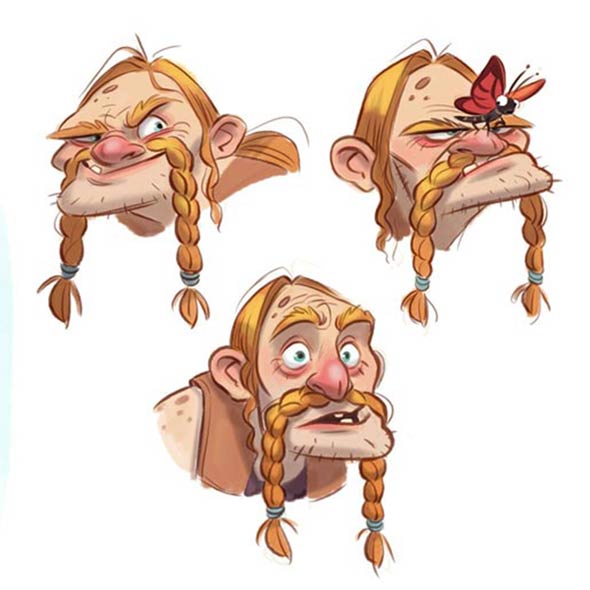
As illustrators, one of our most powerful tools is our ability to convey emotion through our artwork. No matter what project you’re working on, mastering the art of emotional expression can elevate your illustrations to new heights.
Today’s topic was inspired by Kenneth Anderson’s course on How to Stylize Characters. In this course, Kenneth walks you through countless ways to create unique characters.
Another great inspiration is Rodgon’s course How to Bring Your Characters To Life. If your characters are looking dull, this is a great course to master facial expressions, body composition, and much more!
Alright, now let’s get into some tips to help you depict emotions more effectively in your illustrations.
Before diving into illustration, it’s essential to familiarize yourself with the fundamentals of emotions. Familiarize yourself with basic emotions like happiness, sadness, fear, anger, surprise, and disgust. Each emotion has distinct visual cues—like facial expressions, body language, and color palettes—that can help you communicate feelings effectively.
The face is a powerful canvas for emotion. Study how different emotions alter facial features. For example, a smile can brighten eyes and lift eyebrows, while a frown can pull down the corners of the mouth and furrow the brow. Practice sketching a variety of expressions to build your repertoire. Remember, subtle changes can make a big difference!
Beyond facial expressions, body language is crucial in conveying emotion. Consider the posture, gestures, and stance of your characters. A slumped posture might suggest sadness or defeat, while an open stance can indicate confidence or excitement. Pay attention to how the body interacts with the environment and how it can enhance the emotional narrative.
The way you compose your illustration can greatly impact emotional delivery. High contrast can create drama and intensity, while softer contrasts can evoke gentleness and tranquility.
Consider the placement of your characters within the frame; isolating a character can evoke feelings of loneliness, while placing them among others can create a sense of belonging.
Emotions are often tied to narrative. Think about the context of your illustration. What story are you telling? A character’s expression might be more powerful when viewed in relation to their surroundings or the actions of others. Use elements in your scene to build a narrative that enhances the emotional depth.
Nothing beats real-life observation. Spend time watching people—how they express emotions in different situations. This practice can provide insights that you might not get from studying photos alone. Consider keeping a sketchbook handy to capture moments of emotion as they happen.
Capturing emotion in illustration is a journey that requires practice and keen observation. By understanding the nuances of expression, body language, color, and narrative, you can create artwork that resonates deeply with your audience. Keep experimenting and refining your skills—every illustration is an opportunity to connect on an emotional level.
Don’t forget to check out Kenneth Anderson’s course on How to Stylize Characters to bring your stylization to the next level. Not to mention Rodgon’s course on How to Bring Your Characters To Life. This course will help you master the art of facial expressions, body composition, and much more!
Happy illustrating!
Emilie Apel is a French/American multidisciplinary artist based in the U.S. She travels frequently to Nepal and loves exploring the fusion between her meditation practice and art. Emile's favorite medium is watercolors.